Review: MUSIKAL BELAKANG PANGGUNG Shines with Both Activism and Theatrical Merit
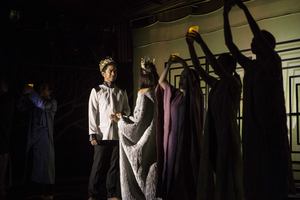 A new and original musical tackling on the subject of sexual abuse, Musikal Belakang Panggung, had completed its 4-show run on March 8th at the Institut Français d'Indonésie. The show was created in collaboration with Lentera Sintas Indonesia, an NGO with the mission to empower sexual abuse survivors.
A new and original musical tackling on the subject of sexual abuse, Musikal Belakang Panggung, had completed its 4-show run on March 8th at the Institut Français d'Indonésie. The show was created in collaboration with Lentera Sintas Indonesia, an NGO with the mission to empower sexual abuse survivors.
This review contains spoilers.
Musikal Belakang Panggung tells the story of Rani (Mian Tiara), an aspiring actress who gets the break of her career: a lead role in Ayodhya, a musical (within this musical) adaptation of the Indonesian legend of Rama and Shinta. She's to star opposite Adit (harpist Rama Widi) under the direction of renowned Indonesian director Teguh (Kiki Narendra).
As Rani keeps running late to rehearsals, drawing Teguh's ire, Adit offers to lend her his unlived-in apartment. During rehearsals, Adit's attempts to portray the intimacy Teguh demanded grow more extreme, culminating in a forceful kiss. Although the incident deeply shocked her, Rani can't bring herself to talk to her other fellow actors, the lively Metta (Marissa Anita) and Adit's best friend Andri (Muhammad Khan).
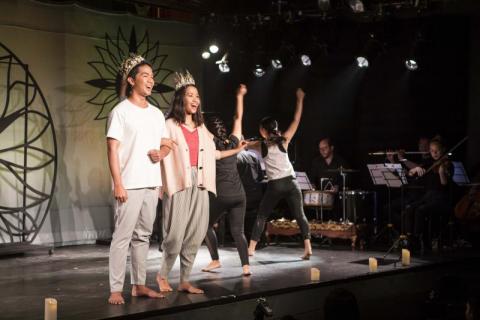
The opening night inches closer with an unspoken tense atmosphere pervading the rehearsals. One evening, Adit drops in on Rani unannounced, purportedly to make amends. Just as Rani lets her guard down, Adit assaults her in a truly mortifying scene. She's only saved by Metta's timely arrival.
Following the incident, Rani struggles to keep her trauma bottled up. She forces herself to go on stage, attending rehearsals where she has to play the role of an adoring wife to the man who attacked her. Rani also tries to confide in Metta, but she stops herself.
The opening night finally comes. The show is going stellarly; the audience goes wild for the modernized take on the well-known tale. Rani's unease is growing. In the climactic scene, Rama/Adit arrives with his army to take back Sinta/Rani, who has been kidnapped by the king of rakshasas.
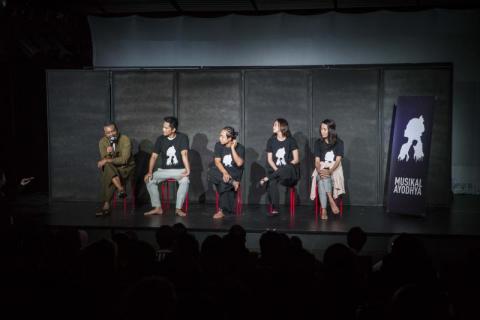
Just as Rama asks Sinta to come back with him, his sickly-sweet words become the final straw. She breaks character; Sinta is no more, there is only Rani. She announces the experience Adit put her through in front of the confused public. The show comes to a premature halt.
In the following days, the public turns against Rani as a newcomer speaking out against the beloved TV star Adit. This commentary of the victim blaming phenomenon is depicted in a nightmarish scene where shadowy figures lash out at Rani, accusing her of making things up or even enjoying the assault. Her parents also appear, telling her to give up on her dreams. This segment had a terrifying yet effective intensity.
In the real world, an enraged Teguh tries to strong-arm Rani into rescinding her accusation. Though they have been silent the whole time, Metta and Andri finally speak up, airing Adit's years-worth of dirty laundry. Metta herself has suffered through a similar experience silently, while Andri has been complicit in keeping Adit's previous scandals under wraps.
In a following press conference, Teguh tries to pass off Rani's outburst as part of the script, claiming that it was intentional, while also stating that Adit has fallen ill and has to be hospitalized abroad. The ludicrous statement doesn't fly and the journalists boo him off stage.

After things die down, Rani meets with Teguh one more time. He applauds her bravery and tells her that he's writing a new take on the play where Sinta saves herself, alluding to Rani's bravery. Before she takes her leave, Rani lends a suggestion: that the new play should be called Belakang Panggung.
The final scene depicts Rani, once again clad in Shinta's garb. It is the final scene of the new musical. In most tellings of the Rama and Shinta legend, the ultimate scene shows Shinta going through agni pariksha (trial by fire). Shinta, who had been kidnapped by the king of rakshasas for years, have to prove that she has remained chaste in front of Rama.
The writers drew symbolism of how the public 'test' survivors who speak up against sexual abuse, often to unjust extent and even putting the blame on them instead of the perpetrator. This time, Shinta is dressed in white, symbolizing her purity. Rama is played by Andri, while Adit is nowhere to be seen. The lyrics sing of how she did not need to prove her virtue for her being and words to hold worth.
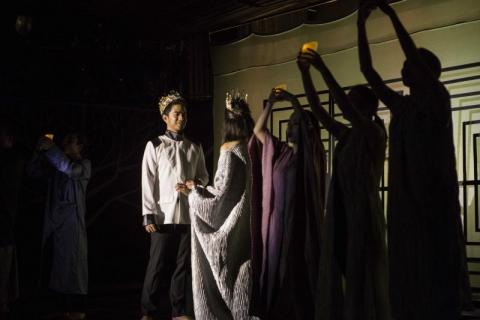
Musikal Belakang Panggung is written by Mario Hasan and Andrew Trigg, the latter of whom also directed the play. It is quite an ambitious undertaking, as it's a play revolving around a whole another fictional musical (the aforementioned Ayodhya, which, in turn, was based on a legend), while also serving as an activism piece regarding sexual abuse.
Although its intricacy carries with it an inherent risk of losing the audience, both Mario and Andrew managed to present the multi-layered nature of the story with impeccable pacing and clarity that it managed to impress without too much confusion. Selecting the Rama and Shinta legend in itself is an inspired choice, as the original legend holds a very traditional view of the patriarchy. Each scene serves a purpose; and the often seamless transitions between reality and on-stage happenings are both interesting and exciting to watch.
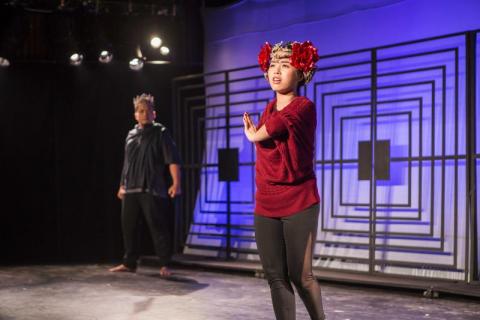
The script is not without a problem. One of the side characters, Andri, is explicitly written to be gay yet his sexuality is mentioned only when Adit is mocking him. This detail could have been written out without changing the story and therefore it felt extraneous.
The notably limited size of the venue also provides another challenge, especially considering the show utilizes a 6-piece orchestra for the live music. The resulting mise-en-scene is worth a look by itself to see how director Andrew Trigg arranged each piece of the scene to work with the stage's limitations.
Musikal Belakang Panggung's heavy themes were successfully delivered by the well-rounded cast. Mian Tiara as Rani particularly impressed as she delivered the darkest moments with impeccable gravitas, drawing from her own personal experience with abuse. Thus it follows that her breakthrough moment was immensely satisfying as well.
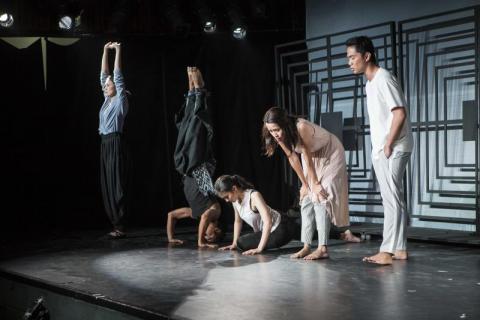
Her co-star, Rama Widi in his first theatrical performance, had a great turn as the villainous Adit. He was able to portray both the Prince Charming-esque facade and the terrifyingly bestial side without pulling any punches. There's still work to be done on the more nuanced moments, such as the scene where he came over to Rani's apartment and pleaded with her to give him another chance, as the scene came across as unintentionally awkward.
In addition, the trio of side-characters truly elevated the play. Award-winning actor Muhammad Khan's Andri is an effervescent bundle of energy with surprising depth during more serious moments, though the character itself could have benefitted from more screentime.
Marissa Anita's Metta is endlessly enjoyable to watch, embodying a cheery big-sister-like figure to Rani who hides an edge underneath the devil-may-care exterior. Marissa's realist approach to acting really brought the character to life like no other.
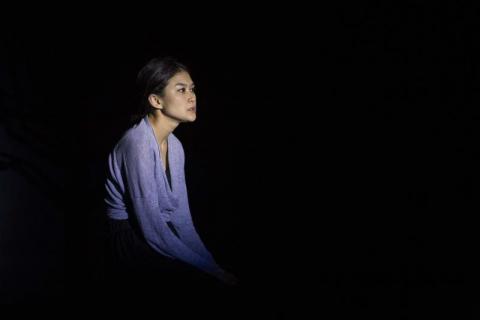
Meanwhile, Kiki Narendra's Teguh, with his booming voice and big gesticulations, is a larger than life figure, though perfectly believable as a stern, ambitious, yet not unreasonable director. He was perhaps the most intriguing character in the play, dealing in shades of grey. His downfall was entertaining and he adjusted to his loss in surprisingly graceful manner.
The cast is also rounded up by three ensemble members: Windy Liem (JPAC's Company), Claudya Hutasoit (TEMAN's Into the Woods), Erik (JPAC's Dreamgirls, Teater Keliling's Rahwana). The three actors fill in as anything from other Ayodhya cast members to Rani's parents during a nightmare sequence. These emerging actors put in solid performances all around, with Windy's singing a notable highlight. How the production made good use of the economic cast (only 7 in total) was also applaudable.
Of course, no musical is complete without music. In Musical Belakang Panggung, however, all songs are contained in Ayodhya, the musical within the show. The original score is composed by Wishnu Dewanta of SilaNada, who also conducted the 6-piece chamber orchestra. The score's artistic merit is without question; each piece is immensely beautiful with the right tone for each moment, be it in grief or triumph. It is a worthy contender of being Indonesia's greatest original score for a musical.

Moreover, the genius instrumentation further complemented the music. The way Wishnu extracted rich, clean sounds from a mere ensemble of six, while still allowing each instrument to shine, was nothing short of magic.
As an aside, since the orchestra were at times part of the scene (as musicians for the Ayodhya musical), they got to play around a bit. One stand-out moment was the one following Rani's on-stage breakdown, where when they descent into pandemonium with music sheets flying as the Ayodhya play went off tracks.
Script writer Mario Hasan also provided the lyrics, which were enjoyable and decently clever, but more importantly, played double duty. They have to be relevant both to the scenes of Ayodhya and the off-stage drama, which the lyrics accomplished with wit.

The singing suffices, though perhaps not the strongest point of the musical. Some actors' vocal color couldn't bring out the song's potential. Overall, the vocal performances felt uneven and provided room for improvement. There was also a bit of choreography by Asep Nugraha which was adequate, although the musical was not at all a dance-heavy one.
Just like the direction, the production design has to contend with the constraint of the auditorium. The set (designed by Avianti Armand & Setiadi Sopandi) consisted of portable set pieces, with the centerpieces being several wheeled frames in which cutouts can be laid upon, creating silhouettes of forests and other backgrounds.
The lighting design (by Jakarta Players longtime designer Russ Vogel) was rightfully dramatic in places, helping to highlight emotional highs and lows. Together with the direction, the set and lighting worked in tandem as the setting changed from the Ayodhya set to Rani's apartment and back.
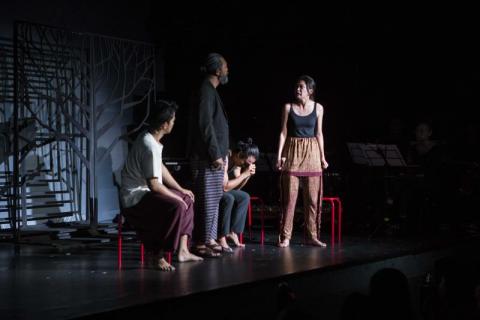
Additionally, there were also a few projection elements in play. These projections were not particularly compelling and could have been either developed more or substituted with simpler lighting effects.
Indra Jaya Aldi was in charge of costume, with Shiseido on make-up. As expected of Musical Belakang Panggung's twofold structure, the characters wore casual clothes when they were off-stage or rehearsing, with the Ayodhya musical having all the fancier costumes.
These pieces drew from both the traditional and the modern; the cuts and flow of the costumes were definitely contemporary, bringing to mind state-of-the-art runway outfits. However, the ethnic influence was also apparent, particularly in fabric and pattern choice. The resulting look was thoroughly unique and memorable. A few of the ensemble's outfits were perhaps on the simpler side, though functional considerations might have played a hand.
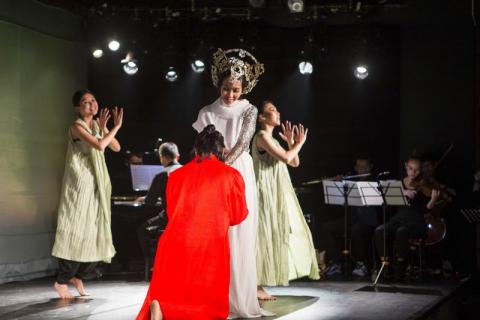
Taken as a whole, these elements come together as both an impressive and memorable piece of theater. Its true worth, however, lies in its message about the importance of speaking up in the face of sexual abuse. Musikal Belakang Panggung was born as part of the #MulaiBicara (#StartSpeaking) campaign by Lentera Sintas Indonesia, a campaign encouraging people to open up about their sexual abuse experience in the hope of bringing justice to them while also assisting their healing process.
In Musikal Belakang Panggung, Rani's decision to finally speak up in front of the public causes an outrage. Many people doubt her or even blame her. However, her confession also triggered other people to speak up (in this case, Metta and Andri). At the end of the day, there's no perfect happy ending, but Rani and other survivors can start to heal and grow stronger, while the perpetrator is disgraced (though, as often happens in real life, doesn't face legal repercussions).

It was readily apparent that the team behind Musikal Belakang Panggung understood the importance and urgency of the topic and put their soul into it. Although the characters go through unimaginable hardships, the work itself is one borne out of love. And the result is a striking piece that will, hopefully, not only encourage survivors to speak up but also help everyone to be more aware of the sexual abuses happening around them and put an end to them.
Disclaimer: This review was written by Broadwayworld Indonesia's regional contributor, Rakaputra Paputungan, who was involved in the production as an outsourced ticketing manager.
Reader Reviews

Videos

